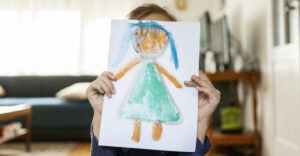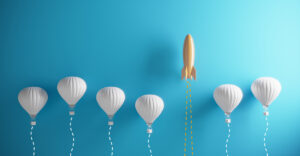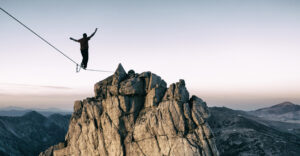Ahh… Research! Spending your days, poring over books in low lit rooms. Frantically writing down notes. Looking at graphs, pretending to know what they mean. I’m already falling asleep writing this down. Luckily, I’ve got a job where I stab myself in the hand several times a month. There’s no better way to keep yourself focused!
As a sculptor, you could decide not to spend a single second on research for your entire career. But for obvious reasons, you might want to hit the books – or the internet – from time to time anyways. From finding anatomy references, to researching examples of materials we use in our sculptures, it does add quality to our work, if we do a bit of groundwork first. Not everything can come from memory, after all.
When working on “Daydream”, my butterfly project, finding reference material was fairly straight forward. All I had to do was look for scantily clad women in negligées. For some reason, the internet is filled with content like that. My newest project is a bit more difficult, though. The main feature is going to be water. And although you can find plenty of photography showcasing the most beautiful waves, or artistic water splashes… The issue with this project isn’t so much water itself, but how to translate the ‘essence’ of the material. Water, after all, is a very lightweight, liquid and swift element. But if you’ve ever had a close encounter with solid bronze, you’ll know that this metal is notoriously heavy-handed. So, how do I make my sculpture look like actual water?
Turning Bronze Into Water
Despite the fact that the two elements are so dissimilar, I did spend most of my week sifting through photo references. Ocean, bodies emerging from water, waves crashing against the pier etc. etc. I also looked at videos and was constantly rewinding to see how a wave eventually collapses into itself. Despite having references of other artists depicting water, I decided against analyzing those. At this stage I don’t want my brain to get clouded by another person’s style or concept.
Another part of this stage is simply trial and error. The only way to find out how to make bronze look like water, is to try different techniques. See what works and what doesn’t. And the funny thing is that even though my style is realism, this doesn’t mean you always have to recreate photorealistic images. Sometimes what you want to do is catch the material expression of an element.
Like Water, It Slips Through The Fingers
Even though, this was supposed to be a ‘simpler’ project for me – as in: It’s going to have less repetitive detail – I think this research phase might take up quite a long time. Until I understand how to depict water, this project is in limbo. But, oh, what a lovely limbo it is. Because I get to fix a difficult problem. The question? “How to liquefy bronze at room temperature”. And although I don’t really care about research, I do love solving puzzles.
So, let’s venture into the unknown!





